The Hart Museum remains closed. Los Angeles County has approved a plan to transfer the William S. Hart Museum and Park from the County to the City of Santa Clarita.
Lizard Fieldwork is Just a Metro Ride Away in Los Angeles
Scoping out reptiles right under our noses.

Originally published on January 19, 2017
Where does a field biologist work? You are probably thinking of some distant place, like a rainforest or desert. But biodiversity discoveries can also be made right here in urban Los Angeles. Regular readers of this blog know that with the help of citizen scientists, Natural History Museum (NHM) researchers are often discovering species not previously known to be in this area. Frogs, lizards, snails, slugs, flies, and spiders—new discoveries are regularly being made, and our field sites are quite often front and back yards.
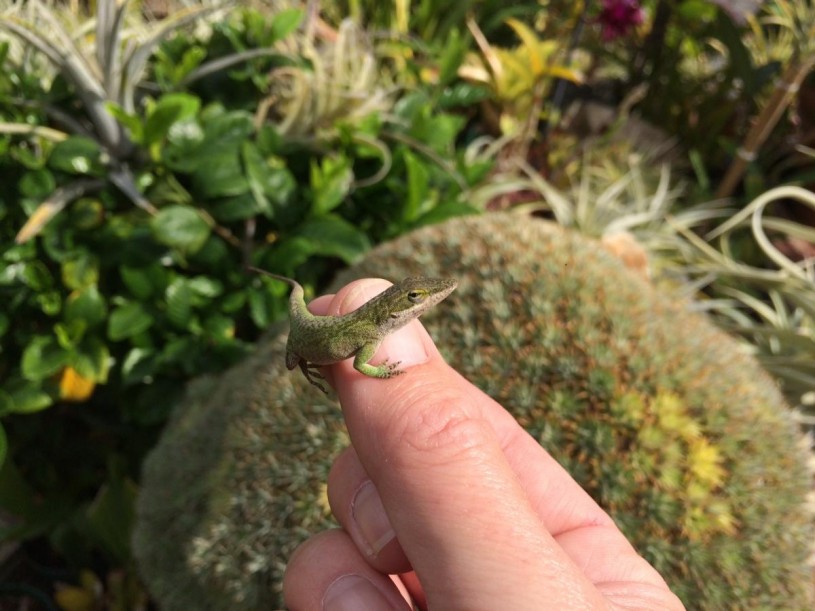
Since its initiation in 2013, the RASCals (Reptiles and Amphibians of Southern California) Community Science Project here at NHM has led to the discovery of more than a dozen new populations of lizards living in Southern California. The only catch is these lizards don’t belong here; they’ve come from other parts of the world and could negatively impact our local species by preying upon smaller species or outcompeting our native lizards.
How are these discoveries made? Usually the story starts with a citizen scientist, like Robert Asahina. This past June, Mr. Asahina, who lives in the Palms neighborhood near Culver City, emailed the RASCals project with photos of two lizards seen in his backyard. Mr. Asahina correctly identified the lizards as green anoles (Anolis carolinensis), and noted “…they’re proliferating in our yard.” Green anoles are native to the Southeastern United States, but not to California. We have documented several populations of green anoles in Southern California, mainly in Orange County, so we were excited, but also alarmed by a potential new population in Los Angeles. The key question was to determine whether this was an established, breeding population.
Being environmentally-friendly scientists, we decided to ride the Metro Expo Line, which conveniently stops at both the Natural History Museum and Palms, to the field site.

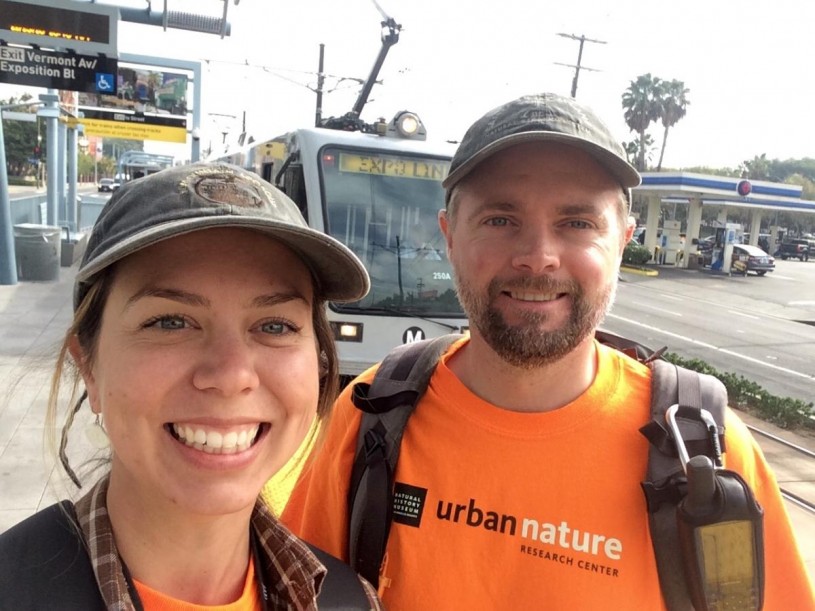
We might have stood out in our bright orange NHM Urban Nature Research Center t-shirts and ‘field clothes’, but we were on a mission. If you see people wearing these bright orange shirts on the Metro or walking around in public, they are doing urban ecology research! Stop and say ‘hi’ and ask what they are studying. You might be surprised by the diversity of research that is being done in your own neighborhood.
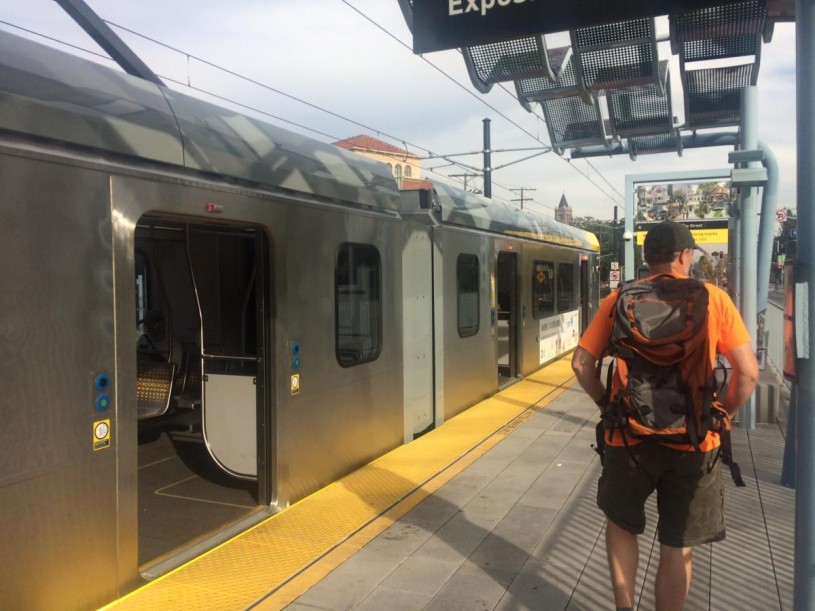
We made it to the neighborhood after a very relaxing Metro ride (no traffic!) and indeed found some suspicious lizards lurking about. We caught a few green anoles and found several juveniles, which indicates that this population is breeding and growing in number. If these lizards spread to areas where native lizards occur, they could negatively impact the local species. We have seen native lizards disappear from other areas where anoles have invaded.
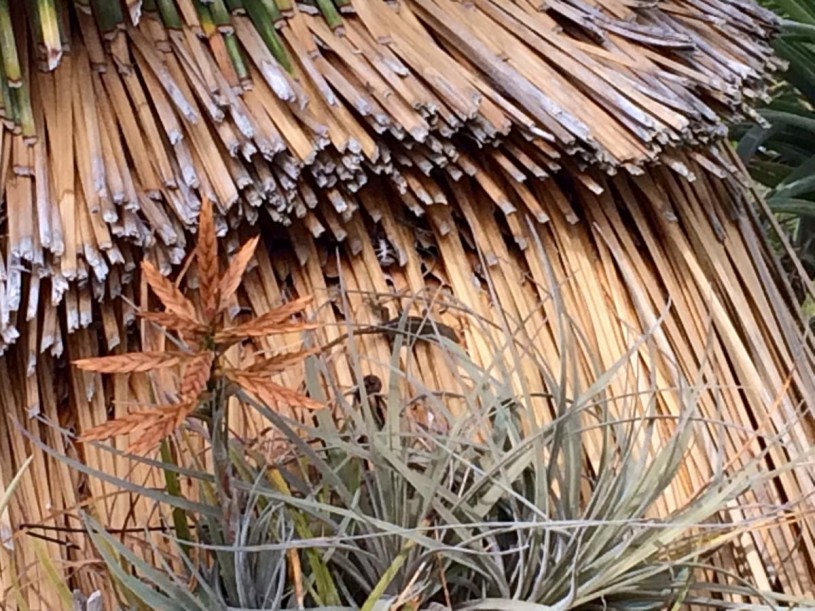
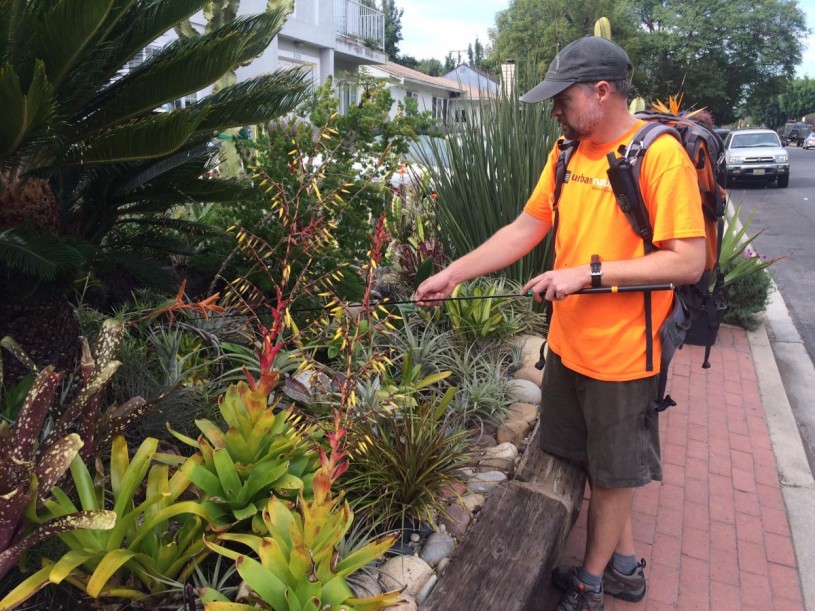
We documented many green anoles in Palms, and as such know that a population is established and is likely spreading. Now that it is winter, the anoles are inactive and waiting for spring and warmer temperatures to arrive. When that occurs, we will go back to determine how widespread they are and if they are interacting with any native lizard species.

Because Mr. Asahina reported this unusual looking lizard to the RASCals project, we were able to document the second established population of this nonnative lizard in L.A. County. There are almost certainly additional anole populations elsewhere in L.A., just waiting to be discovered by other observant citizen scientists. If you see strange lizards in your yard or neighborhood, email a picture of them to nature@nhm.org, tag them #natureinLA on social media, or submit an observation to our RASCals project on iNaturalist.